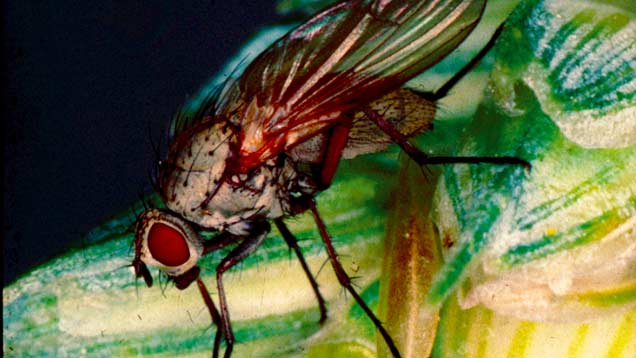Warning of high wheat bulb fly pressure in North
 Wheat bulb fly
Wheat bulb fly Cereal crops in Northern England are likely to be at high risk of wheat bulb fly attack in the spring, according to early survey results.
So far the AHDB’s autumn wheat bulb fly survey has sampled soil at 14 sites across the North and Eastern parts of the country, with crops in the North facing “moderate to high” pressure.
Two sites in North and East Yorkshire are considered to be high risk this year with more than 250 eggs/sq m. Four other sites in the same area are at moderate risk.
See also: Weather conditions see flea beetle activity surge in oilseed rape
The contrast in pressure between Northern and Eastern counties is stark, with all five Norfolk sites tested so far being classed as low risk.
Meanwhile, Cambridgeshire results give a very mixed picture with three organic sites coming out as having low, moderate and very high risk.

Adult wheat bulb flies lay eggs on bare soil in the autumn, which then hatch in the following spring and larvae invade cereal crops including wheat, barley and rye.
Plant tillers are attacked at the base of the stem, causing the “deadheart” symptoms as the tiller dies and can lead to significant yield losses.
Caroline Nicholls, AHDB Cereals & Oilseeds research manager, says growers in high-risk areas must be on their guard and stay vigilant for larvae activity early next year.
“Keep an eye out for the pest early next year to determine the need to spray, especially for later-drilled crops or those with only one or two tillers at the time of wheat bulb fly hatch,” she said.

